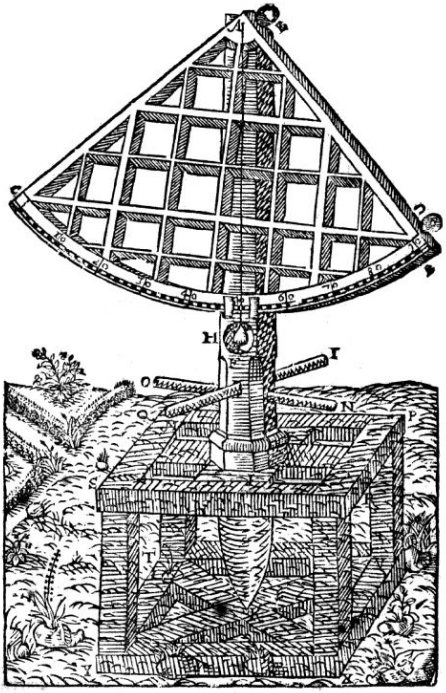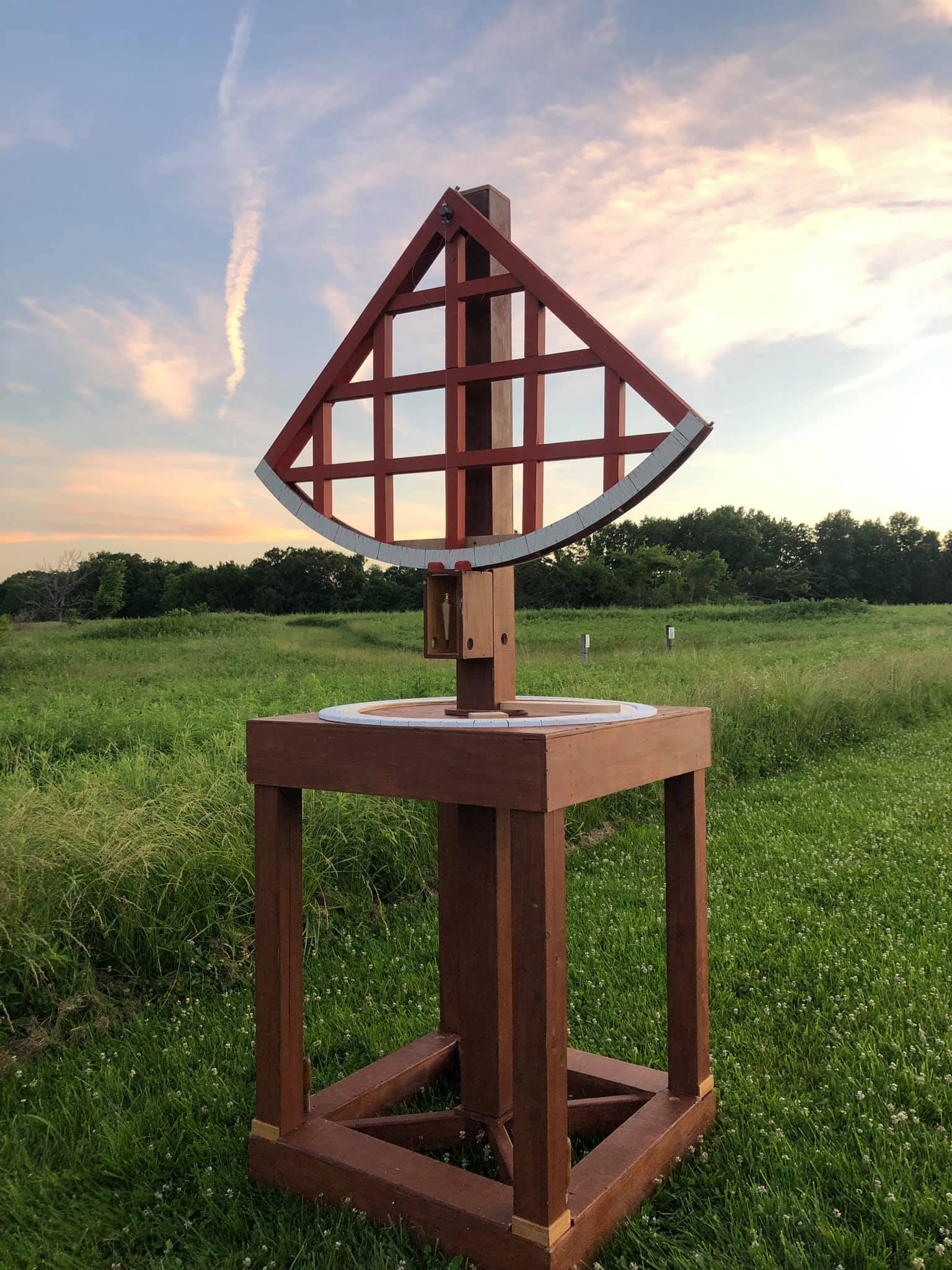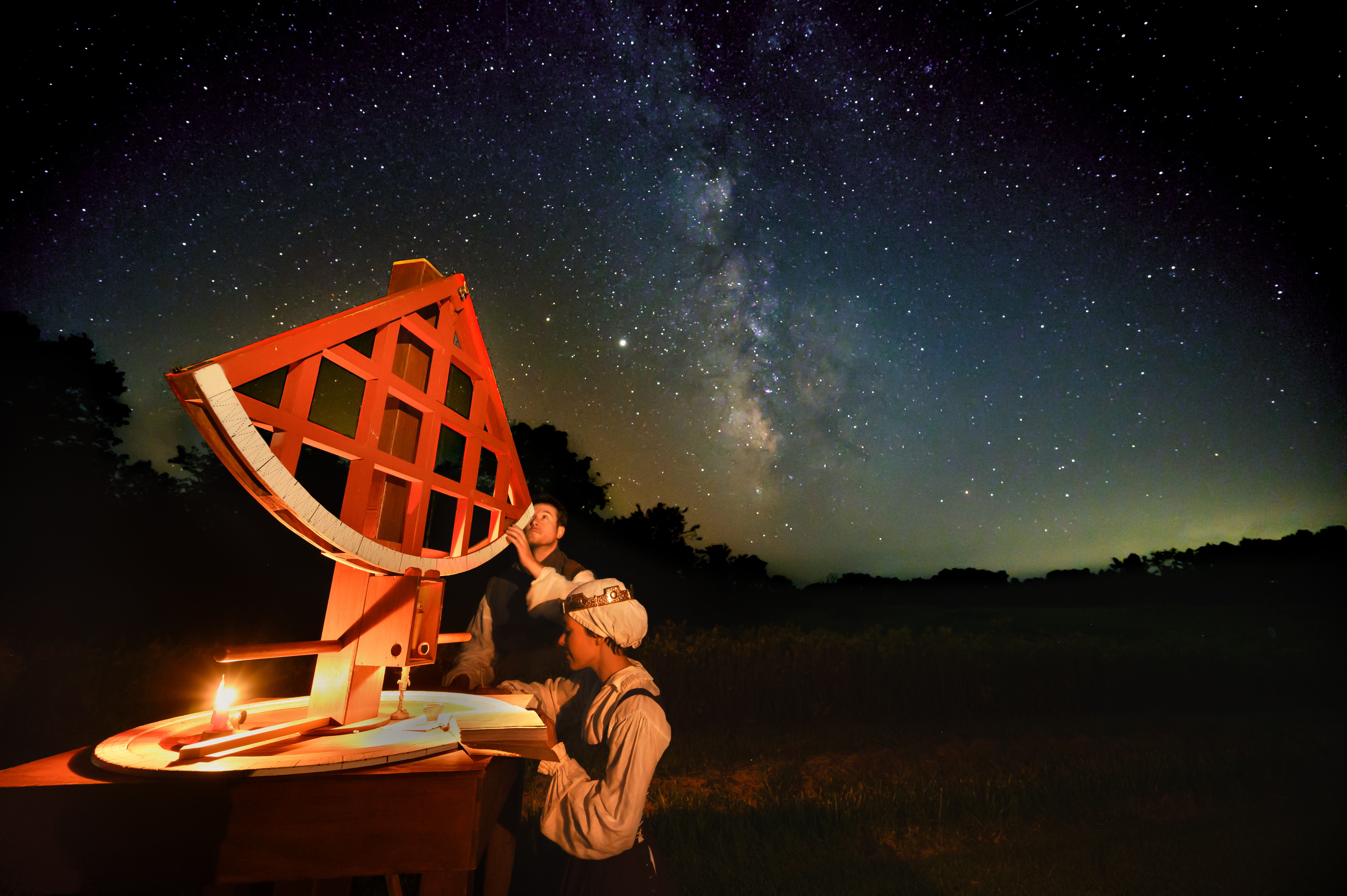Astronomy
 Sometime around 2016, one of my Facebook friends posted an image of a period astronomical toolkit similar to the one at right. I immediately wanted to make one suitable for my persona. However, beyond simply making one, I wanted to make sure it was appropriate for my location as I knew that the tables and the miniature astrolabe would need to be adjusted for latitude.
Sometime around 2016, one of my Facebook friends posted an image of a period astronomical toolkit similar to the one at right. I immediately wanted to make one suitable for my persona. However, beyond simply making one, I wanted to make sure it was appropriate for my location as I knew that the tables and the miniature astrolabe would need to be adjusted for latitude.
Thus, I began researching astronomical calculations and almost immediately, I started wondering how astronomers in period not only predicted the positions of the fixed stars, but the position of the moving bodies - the sun, moon, and planets. Given that my persona is the very end of period, the work of Copernicus and Kepler immediately came to mind.
So I picked up a translation of Kepler's Astronomia Nova and started working on it, only to discover that, despite having a BS in Astronomy, I couldn't understand most of what he was saying. The context Kepler working in was so fundamentally different than how we think of modern astronomy, that it was nearly indeciperhable.
Throughout period, astronomical thinking was dominated by the Ptolemaic model which, despite Kepler working out a better model, wasn't thoroughly accepted until well after period. Regardless, I realized this was where I needed to start. So I purchased a translation of Ptolemy's Almagest and began working through it.
 At the same time, I started researching other astronomical instruments. One of the most important sources was Tycho Brahe's Astronomiae Instaturatae Mechanica. In it, he depicted a wooden instrument known as a quadrant. Looking at it, I realized this could be made to disassemble and fit in a vehicle and decided that I should construct one so, when when I understood how the mathematical models were constructed, I could reproduce their methodology using my own data.
At the same time, I started researching other astronomical instruments. One of the most important sources was Tycho Brahe's Astronomiae Instaturatae Mechanica. In it, he depicted a wooden instrument known as a quadrant. Looking at it, I realized this could be made to disassemble and fit in a vehicle and decided that I should construct one so, when when I understood how the mathematical models were constructed, I could reproduce their methodology using my own data. Thus, in the summer of 2018, my father and I built an instrument based on Tycho's.
Thus, in the summer of 2018, my father and I built an instrument based on Tycho's.
Despite not being able to follow Kepler's methods, my research did indicate that he could only use observations of the planets when they were at opposition (directly opposite the earth from the sun). Since this is a rare occurrence, I decided to use the quandrant to fulfill another purpose: To do astrometry - determining the positions of the stars. This could then be used to produce a set of stellar maps simlar to those in Johann Bayer's Uranometria. The data is compiled into a spreadsheet in Google Sheets.
My progress in all avenues is tracked in my blog. There, I explain the Almagest as I progress. While there are a couple sources that help readers of the Almagest understand the work, they both tend to explain it using modern mathematics. Thus, my blog is the first source that seeks to explain the Almagest in its entirety in its own context.
From this research, I plan to teach a series of classes to help explain Ptolemy's work to attendees, as well as other classes on the topic of period astronomy.

Image by: Will Day